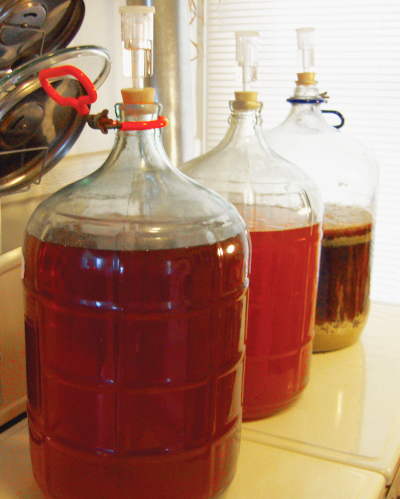 It doesn’t happen often to homebrewers, but every once in while, a beer fermentation stalls out. It’s called a stuck fermentation. Why does this happen?
It doesn’t happen often to homebrewers, but every once in while, a beer fermentation stalls out. It’s called a stuck fermentation. Why does this happen?
Any fermentation that is stressed has a chance at getting stuck. Sources of stress can be a lack of yeast nutrition, fermentation temperatures being too high or too low, or the yeast itself is not of good enough quality or quantity to complete the fermentation.
One of the best things you can do is to avoid a stuck beer fermentation in the first place: build a healthy yeast starter, use yeast nutrient, and keep the fermenter within the recommended temperature range for the yeast you’re using. When all else fails, however, you may need to take measures to resolve a stuck fermentation.
How to Restart a Stuck Beer Fermentation
- Make sure you actually have a stuck fermentation. Check the hydrometer readings on your beer at least three days apart. Make sure you’ve cleared the hydrometer sample of bubbles, which can affect the reading (just pour the sample a few times between a couple beer glasses). If the reading hasn’t changed and you’re still a ways (more than 5 points) from your estimated final gravity, proceed. But if the reading has changed, just give the beer more time. On the other hand, if the hydrometer reading is static and within about five points of your final gravity, fermentation may just be complete.
- Check the fermentation temperature. The yeast may have stalled because the fermentation temperature is too cold. Try moving the fermenter to a warmer area. A five-degree rise in fermentation temperature may convince the yeast to “wake up” and get back to work.
- Rouse the yeast. You can also try mixing the yeast back into solution to restart a stuck beer fermentation. Swirl the fermenter or gently stir the beer with a sanitized spoon. Take care not to slosh or stir too vigorously – you don’t want to introduce air into the beer this late in fermentation.

- Add yeast energizer. Yeast energizer contains nutrients that will often restart a stuck beer fermentation. Start with 1/2 tsp. per gallon, adding directly to the fermenting beer. More can be added later if your fermentation needs an extra boost.
- If none of the above work, try racking the beer into a new fermenter and pitching a fresh batch of yeast. Remember to sanitize all of your equipment before doing so.
Stuck fermentations may not happen very often, but knowing what to do when one comes your way will help make sure you don’t miss out on a tasty batch of homebrew.
How do you usually restart a stuck beer fermentation?
———————————–
David Ackley is a writer, brewer, and craft beer marketing consultant. He holds a General Certificate in Brewing from the Institute of Brewing and Distilling and is founder of the Local Beer Blog.

How cold is too cold?
This summer has been very hot so I thought it would warm enough to put the brew int the shed overnight as the temp wasn’t getting much below 20degrees.
However, the temperature has recently nosedived and night temps are below 20 .
Would this halt the fermentation?
Assuming you are talking about 20°C (68°F), it will most likely slow down a fermentation, but mostly likely would not stop it. The only exception to this is if the fermentation was at its very end. Then the yeast may not attenuate of finish off the last bit of sugars/carbs as you would like. In general, you should be trying to keep the fermentation as stable as possible throughout the fermentation. Fluctuation is hard on the yeast and can cause off flavors.